The purpose of a concept car is to let automakers show off and theorize what a car of the future could look like. Many are thinly-veiled, idealized versions of a real car that is indeed in the near-future pipeline, but some are a bit more ambitious than that. Take, for example, Ford’s Synergy 2010 concept car from 1996. As its name suggests, it presented what the company predicted family cars would look like in 2010. For reference, a concept car from 2010 that did the same thing would be branded as the Synergy 2024.
Despite being more than two prediction-concept-car cycles out, the Synergy 2010 looks nothing like the cars of today, let alone the ones from 2010. It looks wild, like a giant metal insect with wheels and a bulbously big greenhouse that’d have a hard time passing today’s crash standards. But underneath the skin, it also got a whole lot of stuff right.
From the original press release, which you can view as a five-page printout on Ford’s heritage vault, scanner artifacts and all, the Synergy 2010 “incorporated advanced technologies evolving from defense and space programs as well as design cues borrowed from race cars.” Borrowing from military, aerospace, and motorsport technology (or claiming to anyway) was indeed something automakers loved to boast about in 2010 and still do today, so that checks out.

Even more optimistically, then-CEO Alex Trotman set a rule that prices would not inflate.
“Synergy 2010 is a good example of the kind of quantum leap, breakthrough thinking we’re encouraging in our new global alignment,” he said. “It’s also a good example of our focus on affordability—the ground rules are that its costs will have to be comparable to today’s mid-sized car,” emphasis mine. Oh, how far we’ve fallen.
“This is very much a ’stretch’ exercise, especially when it comes to making this advanced technology affordable. But pushing the leading edge is what we’re all about these days.” Ah, there it is.
It Got The Materials Right
Compared to the best production Fords of 1996, the Synergy 2010 is said to be one-third lighter and 40 percent more aerodynamic while still seating six. It weighs a feathery 2,200 pounds thanks to “advanced materials,” an all-aluminum unibody, and, I suspect, a slight underestimation of what crash standards would be like by 2010.
“Ford expects that aluminum could be used in the construction of other key components on the Synergy 2010—including the suspension and brakes—for additional weight savings,” reads the release. “And the company foresees using more high-strength, low-alloy steel as well as other advanced, lightweight alternative materials, including composites and magnesium, on key components to continue the whittling.”
It’s An EREV With Regen Braking And Other Features Used By Teslas And Other Modern EVs
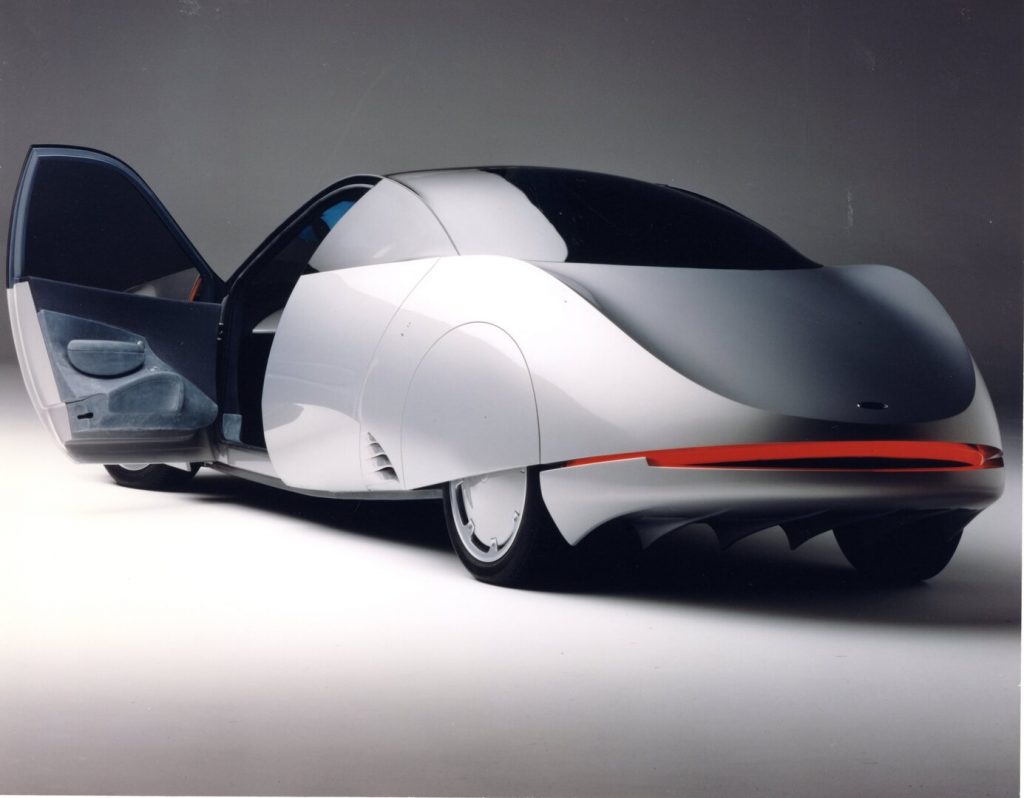
The car is also an extended range EV (EREV): a 1.0-liter rear-mounted gas engine powers a generator providing juice for four electric motors, one for each wheel. Fast forward to 2025, and EREVs are relatively niche stateside but very much a part of the electrified car landscape, especially in China. The Chevy Volt worked this way, as do the rotary (!) Mazda MX-30 R-EV, and certain examples of David’s BMW i3 if you opted for the range extender.
The upcoming Ramcharger, uh, Ram 1500 REV will be propelled by electric motors supported by a V6, while Honda’s two-motor hybrid powertrain employed in almost all its cars isn’t technically an EREV system, but works a lot like one—gas propulsion kicks in at highway speeds, but everywhere else, electricity gets you around and the engine is mainly a generator. Just off the top, though, the only real EREV to get four e-motors like the Synergy is China’s YangWang U8 luxury SUV.
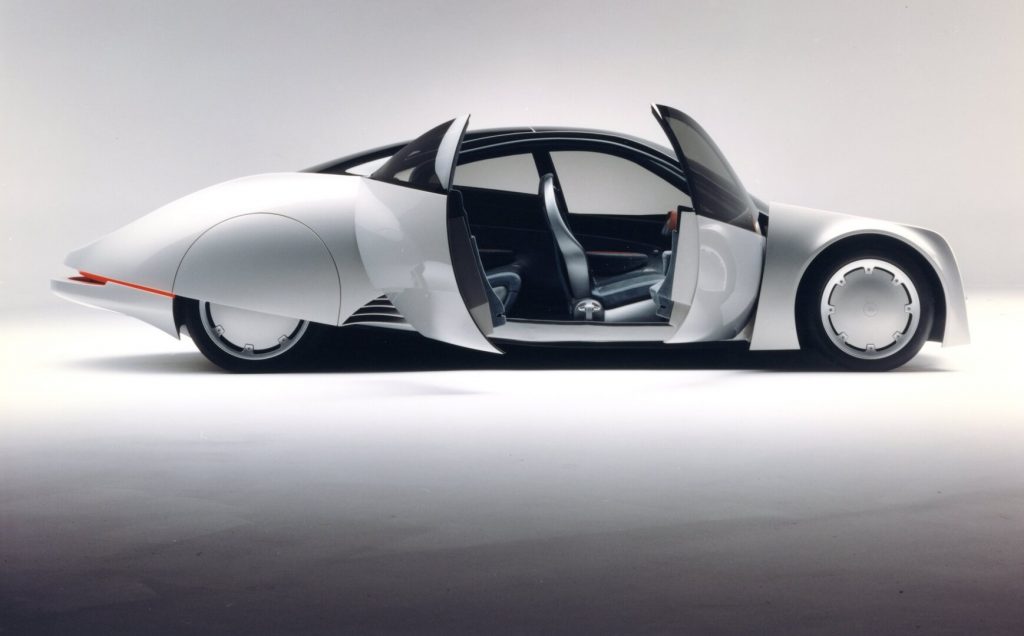
Ford’s 1996 concept also incorporated what we now know as regen braking, a technology that’s used in practically all EVs and hybrids: “Up front, a flywheel would collect excess engine and braking energy, which in turn would be released to augment the engine when, for example, the car needed to accelerate quickly or climb hills.”
The result of all this was said to be “theoretically triple” the fuel economy compared to the typical family sedan of the time. Looking back at official EPA figures, Ford fell short of tripling its fuel economy, but it did nearly double it in that time. The 1996 Ford Taurus got 21 mpg combined, while the 2010 Ford Fusion Hybrid scored 39. Ford spent the next 15 years working on EVs and sunsetting sedans, so those cars’ closest contemporary gas equivalent, the Escape Hybrid, still gets 39 mpg with AWD.
The Synergy 2010 also used cameras housed in the fin-style front fenders in lieu of wing mirrors, a real technology that’s used by many EVs today in jurisdictions that allow it (read: not North America).
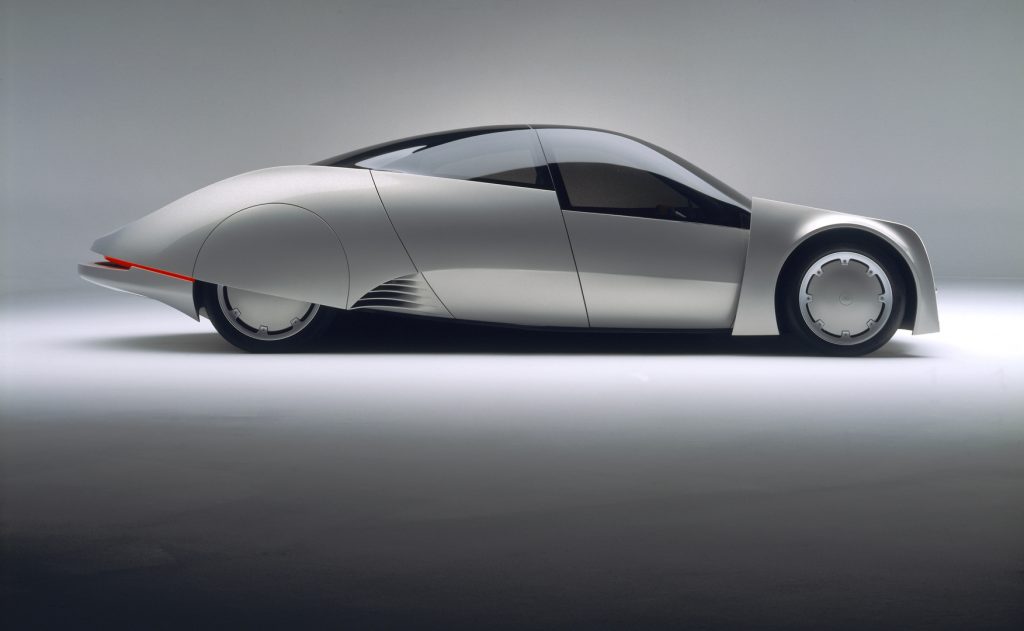
Those Formula 1-inspired fenders also contributed to a coefficient of drag of just 0.20, practically the same as slippery EVs like the Mercedes EQS, Tesla Model S, Lucid Air, and Xiaomi’s SU7. An all-glass roof (table stakes for many luxury cars these days) with solar cells powered a fan that removes hot air from the car when it was parked. Today, Tesla’s Cabin Overheat Protection function and timed interior ventilation in other EVs essentially do the same thing.
The Interior Isn’t Far Off From Cars Of The Day
The tech bits that Synergy 2010 predicted with straight-up eerie accuracy, however, were voice controls and the de-cluttering of automotive UI. From the release:
“To maximize spaciousness and minimize information overload, virtually all the electronic controls are voice-activated—resulting in an instrument panel totally devoid of switches, levers, or buttons The driver monitors vehicle basics by checking a heads-up display projected onto a glass card from a computerized “sourced image” at the back of the steering wheel. Here, colorful computer animation updates vehicle speed, tachometer, temperature and the like. Designers also demonstrate how this system could act as a futuristic video answering machine.

“A separate liquid crystal message center positioned in the middle of the instrument panel comes alive when voice-activated. Here, the driver can access features like an advanced navigation system, the entertainment system, climate controls—even the Yellow Pages. This message center is flanked by screens relaying video from the rearview cameras.”
I feel like I’m listening to someone from the Middle Ages describe Instagram with a time-traveler level of detail. Also, shoutout to the Yellow Pages, the default dinner table booster seat of the ’90s, and a privacy PR nightmare if it were introduced as a new idea today.
The Synergy 2010 even predicted modern-day EVs’ obsession with yokes. “The steering wheel design resembles an aircraft yoke, with the top and bottom thirds of the rim removed so that the driver has an unobscured view of the electronic displays as well as easier entry and egress.
“Also reminiscent of aircraft, the car’s steering column attaches to a cantilevered arm mounted in the center of the vehicle. This makes the vehicle easily adaptable for manufacture for either right- or left-hand drive markets.” OK, maybe that one was a bit of a reach. However, the Synergy’s driver seat is fixed, and it’s the pedals that move forward and back up to six inches. A similar setup would reappear in the 2017 Ford GT supercar.
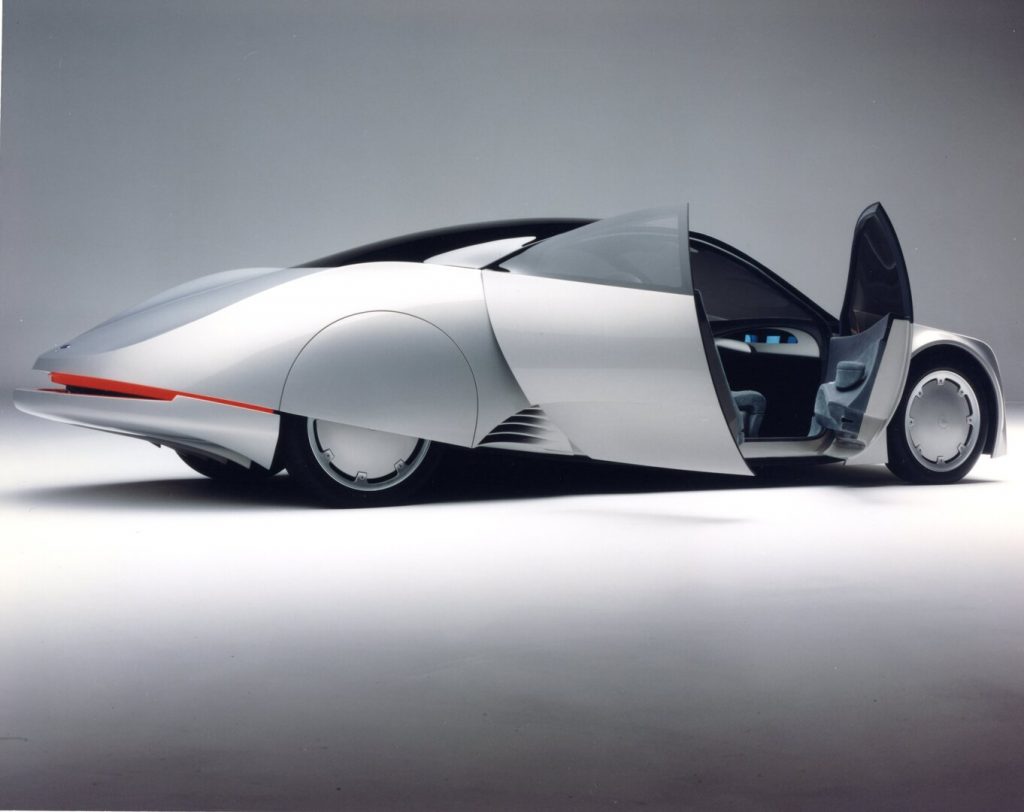
On a final style note, the concept’s French doors may not have caught on, but judging from the rear ends of what feels like every single new car today, the heckblende taillight bar absolutely has.
Hindsight is 20/20, and it frankly would’ve been unreasonable to expect a 1996 concept car called the Synergy 2010 to actually accurately resemble a production car we’d eventually get in 2010. And if I’m being honest, from a style standpoint, I’m not sure that was the worst outcome. The Synergy is striking to say the least, but is it attractive? I’m not so sure.
More importantly, however, it did get a bunch of technical details right about where the automobile was headed. It’s a wind tunnel-styled EREV with two big screens inside, a yoke, a glass roof, and one big taillight bar.
Perhaps Ford should’ve named it the Synergy 2021.
Topshot: Ford

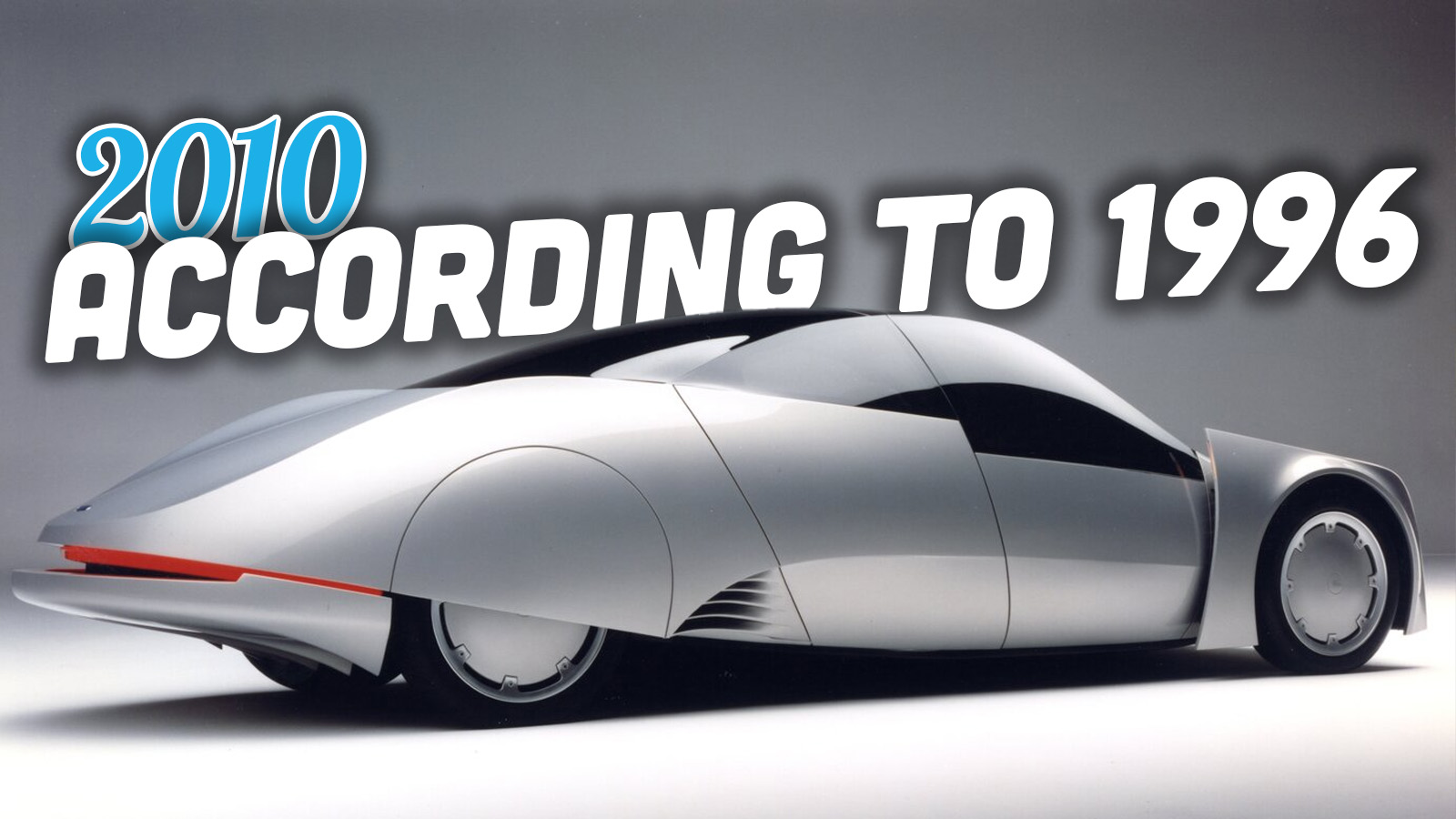







Wow. That interior is Star Trek:DS9 in car form.
It is interesting how they thought we would be so concerned with MPGs. While today’s cars are incredibly efficient with CVTs and ignition control systems, hybrid systems and the like, all of it is systematically ignored by a good 50% of buyers who seem hell bent on buying the biggest meanest trucks out there. Sad how all that brilliant engineering is wasted on making Ford F150s that weigh 6,000 pounds get 14 instead of 12 MPG.